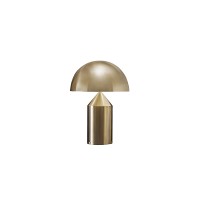When it comes to radical and avant-garde design, the name of Ettore Sottsass emerges as one of the most influential figures of the 20th century. Multifaceted architect, designer and artist, Sottsass has redefined the concept of aesthetics and functionality, challenging the dogmas of modernism with an expressive language rich in colors, bold shapes and irony.
His collaboration with the Memphis Milano collective has in fact marked an era and left an indelible mark on the history of design.
Let's find out in more detail who Ettore Sottsass is and how the Memphis brand was born.
The childhood and education of Ettore Sottsass
Born in 1917 in Innsbruck, Austria, and raised in Turin, Ettore Sottsass was influenced by architecture from an early age, thanks to his father, Ettore Sottsass Sr., who was a renowned rationalist architect. After studying architecture at the Polytechnic of Turin, he found himself immersed in a Europe marked by the Second World War.
At the end of the conflict, he began his career collaborating with his father's studio before moving to Milan, where he came into contact with the post-war cultural fervor. In the 1950s, Sottsass began working for the Olivetti company, where he designed iconic products such as the “Valentine” typewriter (1969), an object that combined design and functionality in an explosion of color and innovative shapes.
This experience consolidated his vision of a design that went beyond mere practicality, introducing a more emotional and symbolic approach.
The birth of the Memphis movement
In 1980, Ettore Sottsass decided to break with the rigor and sobriety of modernism to explore new expressive avenues. During a meeting at his house, with a group of young designers, the Memphis collective was born, a name inspired by Bob Dylan's song “Stuck Inside of Mobile with the Memphis Blues Again”, which played in the background during the evening.
Memphis Milano officially presented itself to the public in 1981 at the Salone del Mobile, with a collection that shocked the world of design. The group's creations were characterized by bright colors, geometric patterns, innovative materials such as plastic laminate and a strong playful component.
Sottsass and the Memphis collective in fact opposed the idea of design as a simple functional exercise, transforming it into an artistic expression capable of evoking emotions.
The Best Sellers of Memphis Milan
Among the most iconic works created under the aegis of Memphis Milano, numerous pieces stand out that today are considered symbols of postmodernism. One of the most famous is the Carlton bookcase, a colorful laminated wood totem that challenges traditional furnishing conventions. Its architectural form, which vaguely resembles a stylized face, perfectly embodies the philosophy of Memphis: a design that is also provocation and play.
Another masterpiece is the Plaza table, with its cylindrical legs and multicolored top, which seems to have come out of a pop comic. The Tahiti lamp, with its zoomorphic silhouette and bold color scheme, also expresses Memphis' ironic and experimental approach.
The philosophy of Memphis Milan
The Memphis movement represented a break with the minimalism and rationalism dominant in design at the time. Sottsass and his collaborators rejected the idea that the object should only be functional: for them, design was a visual language that communicated emotions, told stories and stimulated creativity.
Memphis' creations were inspired by pop culture, Art Deco, kitsch and the world of advertising, mixing cultured and popular references. The use of unusual materials, such as the plastic laminate normally associated with cheap furniture, was a provocation against the concept of "good taste" imposed by mainstream design.
The Sottsass Legacy
Although the Memphis collective officially disbanded in 1988, its influence continues to be palpable in the world of design, fashion and art. Memphis Milano's works are now collector's items, exhibited in the most important design museums in the world, and their revolutionary spirit has inspired generations of creatives.
Ettore Sottsass, who passed away in 2007, left a legacy that goes beyond his material creations: he taught the world that design can be fun, provocative and deeply human. His work with Memphis Milano demonstrated that beauty is not only in harmony, but also in dissonance and surprise, opening up new expressive possibilities for the future of design.
Memphis Milan today
Today, Memphis Milano continues to exist as a brand, reediting the masterpieces of the past and collaborating with contemporary designers who carry on its philosophy.
Some of the most iconic pieces, such as the Carlton bookcase and the Tahiti lamp, are still produced and sold.
Among the most famous reissues there are also the Euphrates and Tigris vases, both characterized by bold geometric shapes and bright colors.
The City table, with its architectural lines and distinct color palette, continues to be a reference for design enthusiasts.
The Primula chair, with its playful style and combination of unusual materials, is another piece that perfectly embodies the Memphis philosophy.
We continue with another icon that continues to be produced, namely the Treetops floor lamp, with its sculptural silhouette and the play of contrasts between shapes and colors.
In addition to this, Memphis has recently collaborated with creatives such as Nathalie du Pasquier and George Sowden, historical members of the movement, as well as young emerging designers who reinterpret the bold and playful style of the collective with a contemporary touch.
The revolution started by Sottsass and his group in the 1980s therefore continues to resonate, reminding us that design, when truly innovative, can change the way we see the world.
Discover Memphis on our Diffusione Luce website!
Written by Alice Pruccoli












































